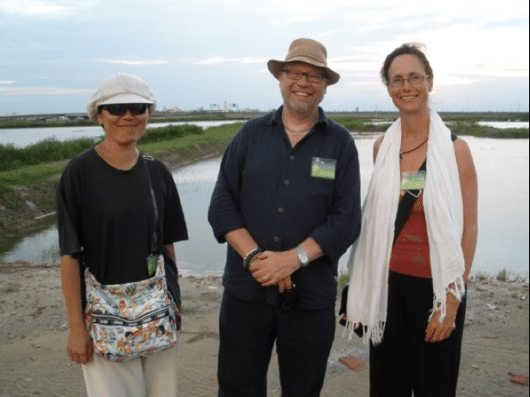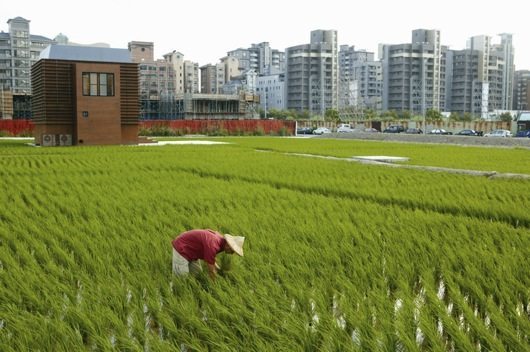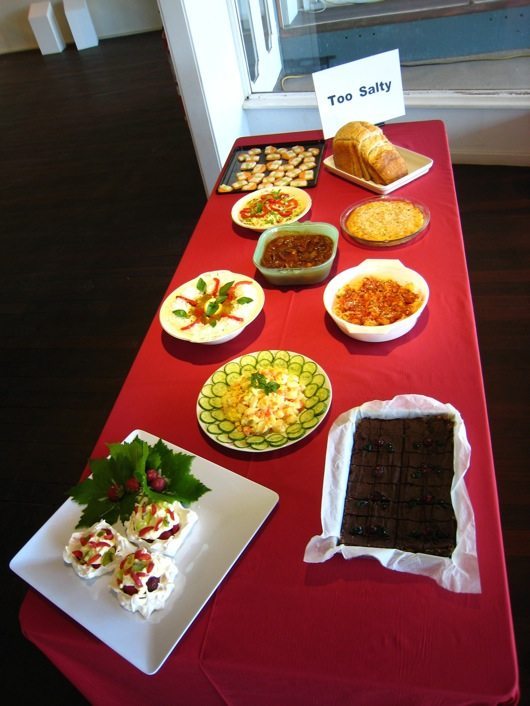Location: US, Taiwan
AUTHOR’S NOTE
From the exhibition catalogue, Going Green, sponsored by the Taipei Cultural Center, New York City, and funded by the Council for Cultural Affairs, Taiwan. The exhibition opened in New York on July 9, 2010, at Queens Botanical Garden (Taipei Economic and Cultural Office in New York)
THE INVITATION TO WRITE THIS ESSAY links back to 2004, when I was introduced to Mali Wu, who is included in Going Green: New Environmental Art from Taiwan. Wu later invited me to Taiwan in January 2006, while she was working on a community arts program in Chiayi County—an international public arts residency entitled Arts as Environment: A Cultural Action on Tropic of Cancer (2005-2008). During that visit she introduced me to various museums, artists, scientists and potential sites as research for recommending artists who could participate in the program. At this same time, I became aware of American artist, writer and curator Jane Ingram Allen who was preparing for her curatorial debut of the inaugural Guandu International Outdoor Sculpture Festival at Guandu Nature Park in Taipei (2006-2009).
In 2008, I was invited a second time to Taiwan for the 4th annual Tropic of Cancer event in Chiayi. This time I went to participate in community dialogues and symposia addressing debris fields of acquaculture waste as material for land art and cultural engagement. Also attending were artists as facilitators including British artist David Haley, and local Taiwanese artists Jen-Hung Liang, and Ying-Chieh Tsai. Following these two trips to Taiwan, and after reviewing documentation from the recent outdoor site exhibition curated by Ingram Allen in Chen Long entitled Cheng Long Wetlands International Environmental Art Project: Children and Artists Celebrate the Wetlands; and from reviewing images of past Guandu International Outdoor Sculpture Festival site works in nature, I was compelled to contribute this essay for a few reasons, which I will explain.

Taiwanese artists making further details of proposals for land art installation in abandoned salt farms for 2009 Tropic of Cancer
It is rare to find a nation or government such as Taiwan that supports the artistic process as much to sponsor travel, accommodations and the printing of catalogues associated with a contemporary art movement that is not so easily categorized. In the last seven years some important American artists and curators have been invited to work on projects in Taiwan, and in collaboration with Taiwanese artists, including: Suzanne Lacy, Helen and Newton Harrison, Tim Collins and Reiko Goto, David Haley, Anne Douglas, Mary Jane Jacobs, Andrea Polli, Joyce Cutler-Shaw, Karen McCoy, Sam Bower, Sonja Hinrichsen, and Roy Staab. As well as artists from India, Netherlands, Norway, Korea, New Zealand, Indonesia, France, Japan, Philippines, and Hungary.
I. GOING GREEN
Going Green is the first environmental art exhibition to travel to America from a single country, not only from Taiwan, but from anywhere in the world. There have been eco artists represented from Israel, Iran, Germany and England as of recent who have been placed in group exhibitions or had solo shows in galleries in the United States, although nothing on this scale with sixteen artists, including eight artists who will travel to the USA to do site-specific installations this year.
In the United States there have been a number of environmental art initiatives in development over the last decade, especially in the southwest where William Gilbert established Land Arts of the American West, an undergraduate program at the University of New Mexico in 2000. The Nevada Museum of Art, in collaboration with William Fox, started a research center and site based program called A+E Center for Art + Environment in 2008. And, the Center for Land Use Interpretation, developed by Matthew Coolidge, has been operating a residency program in Wendover, Nevada since 1997. Although most of the work created for these site-based projects engages in a dialogue of pure aesthetics, it also derives from more pragmatic interests by artists to examine and influence human interactions with nature.
Other important outdoor art and ecology or art and nature initiatives happening internationally include (not in any order of priority): Center for Contemporary Art in the Natural World, The Arts Catalyst, and Yorkshire Sculpture Park (UK); 48c Public Art Ecology (IN); Laumeier Sculpture Park, iPark, and Wave Hill (USA); YATOO International Residence Program and Geumgang Nature Art Biennale (KR); Stanley Park Environmental Art Project (CA); Israeli Forum for Ecological Art; and Environmental Art Festival (IR). And, important museum exhibitions which have also sited works in nature in the last decade include Radical Nature at the Barbican (London, 2009), Weather Report at Boulder Museum of Contemporary Art (Colorado, 2007), ecovention at the CAC (Cinncinati, OH, 2002), and Natural Reality at the Ludwig Forum in Aachen (Germany, 1999).
Occidental artists most well known in the art world for exploring an aesthetic relationship with nature, making art in and with nature, such as Andy Goldsworthy (UK), Nils-Udo (DE), Chris Drury (UK), and Roy Staab (USA), represent nature as a medium of expression, beauty, dominion and spectacle. From an Eastern perspective, making art with nature could be understood as a more authentic cultural practice given the desire for balance with nature historically, particulary with landscape painting. These are both broad generalizations and do not convey the reality that there are Western artists who approach their work with restrained simplicity; yet it is also a puritan aesthetic that can be seen in the harmony portrayed in the Asian arts. Each culture reveres nature and each use nature to their own end.
II. GOING GREEN ARTISTS
Documentation of past works and proposed site-specific works included in Going Green align with international perspectives of artists working in and with nature in the following ways:
Chengho Chen’s site work at the Queens Botanical Garden (Flushing, NY), entitled Quaver, is designed to demonstrate the need for artists to collaborate with nature by replacing wildlife habitat that humans have displaced. Forms from earthen clay in the shape of musical 8th notes will hang from trees, creating nests for birds in an urban environment. American artist Lynn Hull coined this type of work Trans-species Art or habitat sculpture.
For Guandu Nature Park in 2009, Chao-chang Lee installed Flavor of the Wetlands, a convening structure in the shape of a bird’s head made from grasses and leaves stuffed inside a patchwork of recycled clothing found wrapped around a forest tree. This interventionist practice of creating architectural structures as venue for dialogue around issues of sustainability is a highly successful strategy that American artist Amy Franceschini and others often employ.
Chuan-chu Lin’s land art installation in the city of Taipei entitled Rice for Thoughts (2007), where he planted and harvested a field of rice using traditional methods on a parcel scheduled to become a high-rise building is an intervention reminiscent of Agnes Denes’ Wheatfield (1982), a demonstration or transition site that challenges ‘what is art’ for the general public in Taiwan.
The proliferation of plastics is on everyone’s mind due to the media coverage of the nurdle soup patches in our oceans called the 5 Gyres. For Accident Gallery (Eureka, California), Ya-chu Kang creates a human skeleton wearing a plastic cape like ‘Superman,’ entitled Hero, made of recycled plastic sheeting filled with non-biodegradable waste collected from the region.
Creating a human figure with nuisance material is a common motif for artists concerned with environmental issues, one that California artist Kim Abeles has used in her work for over 30 years. Kang and Abeles both ask their audience to consider ‘who are our heroes?’
Julie Chou, who participated in the Art as Environment project in Chiayi while I was in Taiwan in 2008, is interested in projects that involve community participation. In Too Salty (2007), Chou addresses soil salinity in western Australia, a serious problem that threatens the food supply. Local residents were invited to bring overly salty food dishes, potluck style, to encourage dialogue inspired by a sensory experience. This work parallels the performative soil projects of artist Laura Parker (San Francisco), who presents ‘soil tastings’ where participants smell the soil first before eating foods grown in the same soil, entitled Taste of Place.
An important project to be presented in Going Green, which was included in the Taipei Biennale in 2008, is Mali Wu’s Taipei Tomorrow as a Lake Again. This highly conceptual art installation presents the possibility of a changing landscape due to climate change with graphic mappings of rising waters in low lying areas in Taipei (which are many). Helen and Newton Harrison creators of Greenhouse Britain, travelled to Taiwan in 2007 to exhibit and lecture about their mappings and proposals that address entire continents. Their work informed Wu’s altered vision of her hometown as a socially relevant artwork that illustrates an unimagined future by its inhabitants.
Taiwan has invested a generous amount of creative capitol to develop unique art and nature progams in recent years. Due to economic hardships internationally some have ceased programming for now. These programs have paved the way for a rich cultural exchange that will have a lasting impact on the evolution of an international art and nature movement. Going Green is an extension of this effort which will hopefully inspire more environmental art through this beneficial exchange.




